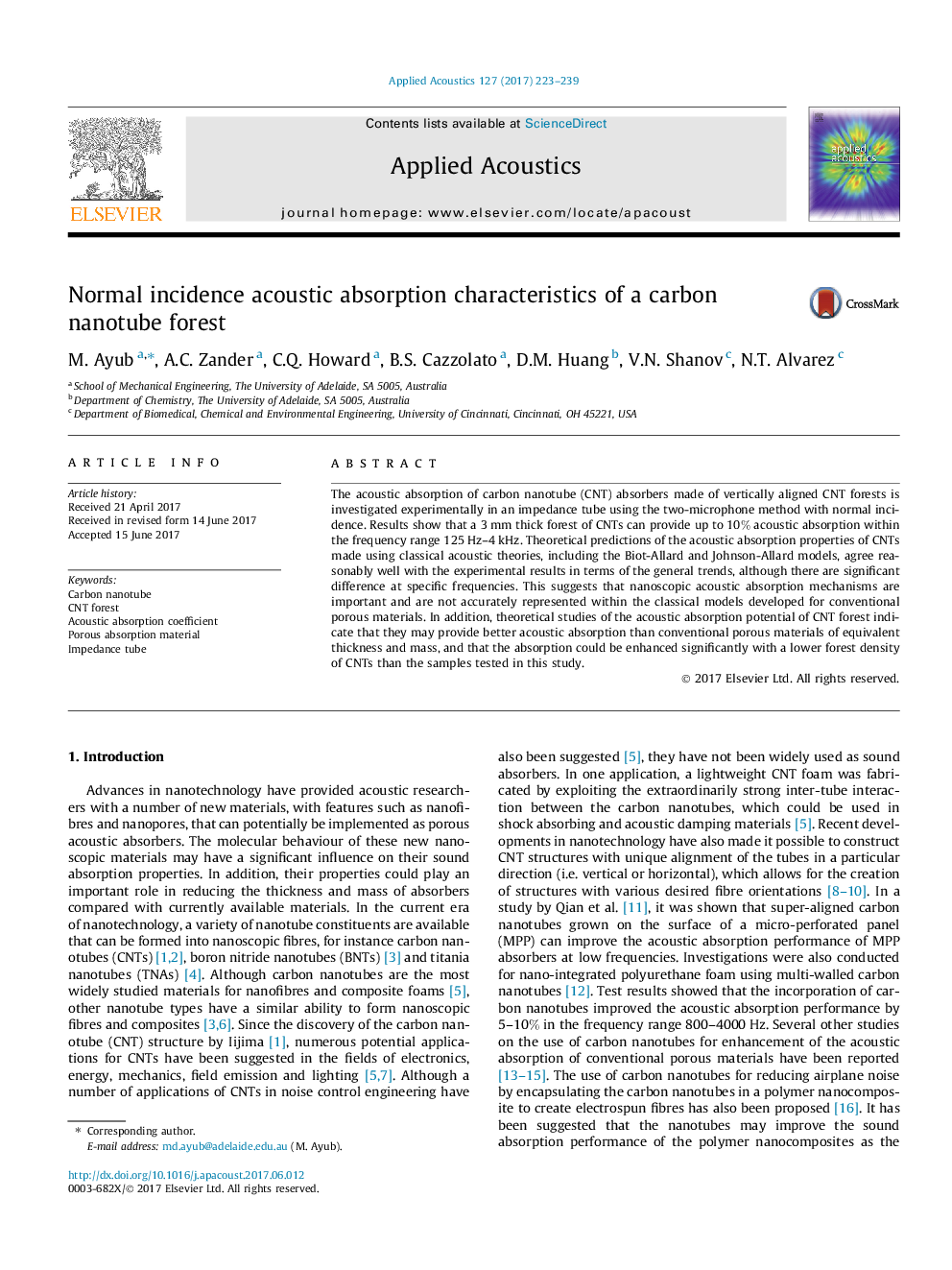| Article ID | Journal | Published Year | Pages | File Type |
|---|---|---|---|---|
| 5010873 | Applied Acoustics | 2017 | 17 Pages |
Abstract
The acoustic absorption of carbon nanotube (CNT) absorbers made of vertically aligned CNT forests is investigated experimentally in an impedance tube using the two-microphone method with normal incidence. Results show that a 3Â mm thick forest of CNTs can provide up to 10% acoustic absorption within the frequency range 125Â Hz-4Â kHz. Theoretical predictions of the acoustic absorption properties of CNTs made using classical acoustic theories, including the Biot-Allard and Johnson-Allard models, agree reasonably well with the experimental results in terms of the general trends, although there are significant difference at specific frequencies. This suggests that nanoscopic acoustic absorption mechanisms are important and are not accurately represented within the classical models developed for conventional porous materials. In addition, theoretical studies of the acoustic absorption potential of CNT forest indicate that they may provide better acoustic absorption than conventional porous materials of equivalent thickness and mass, and that the absorption could be enhanced significantly with a lower forest density of CNTs than the samples tested in this study.
Related Topics
Physical Sciences and Engineering
Engineering
Mechanical Engineering
Authors
M. Ayub, A.C. Zander, C.Q. Howard, B.S. Cazzolato, D.M. Huang, V.N. Shanov, N.T. Alvarez,
